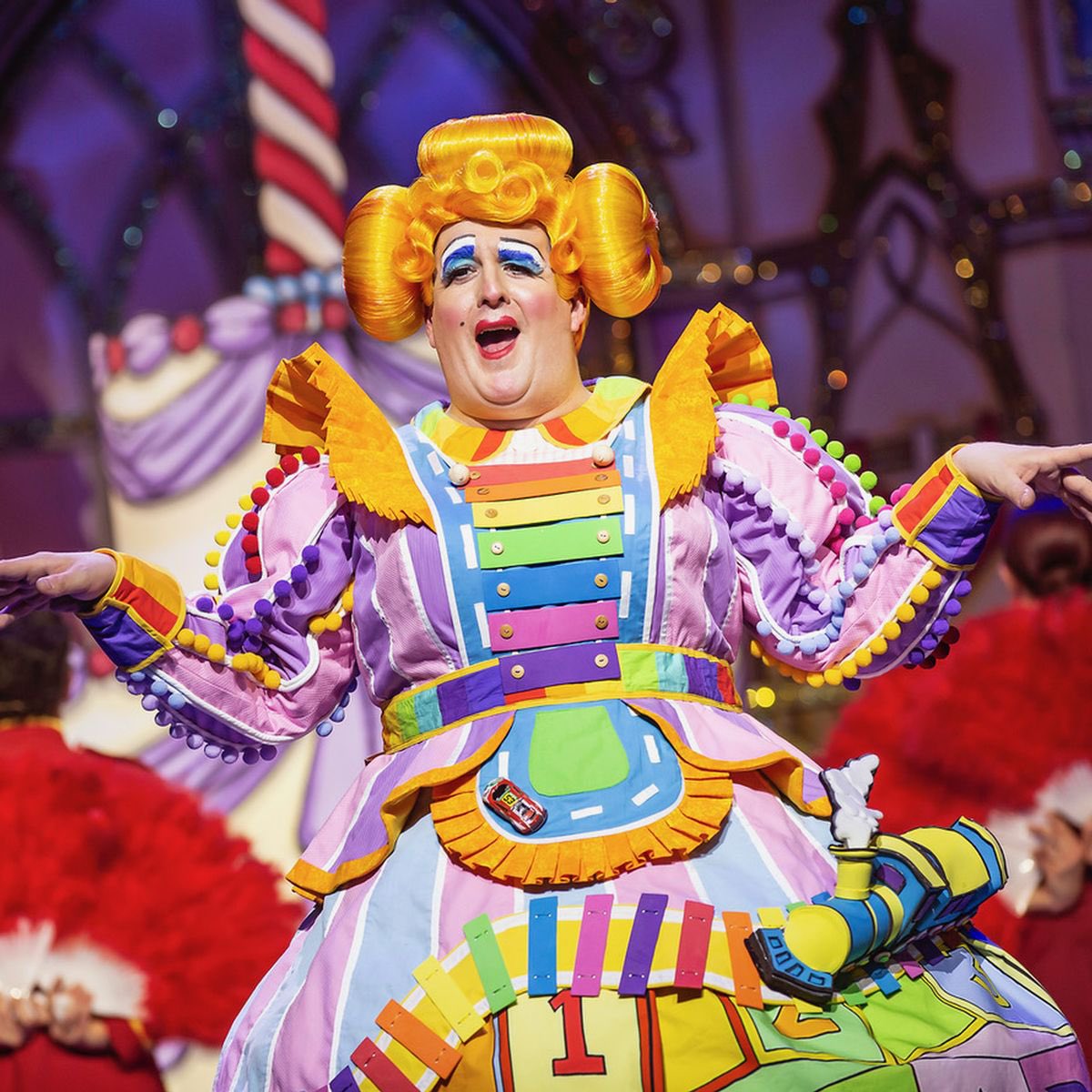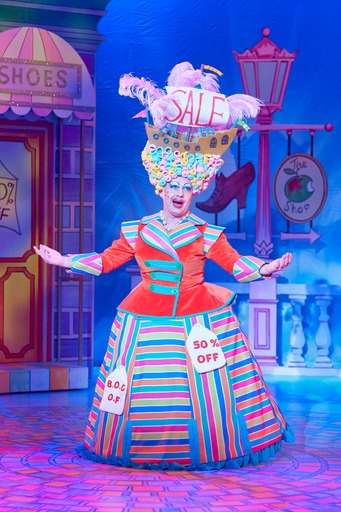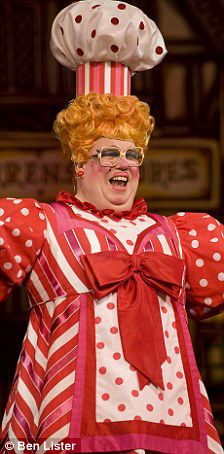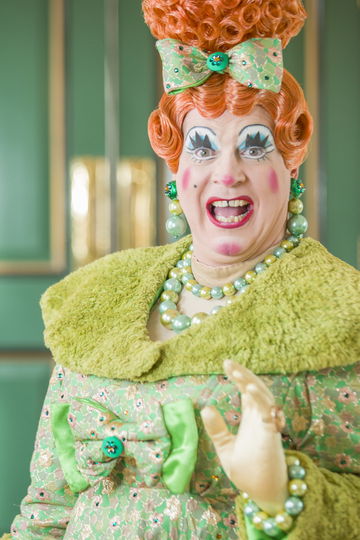
Introduction
The pantomime dame is a quintessential figure in British theatre, embodying humor, extravagance, and tradition. These larger-than-life characters, typically portrayed by men in flamboyant women's attire, have entertained audiences for centuries. Their exaggerated performances and comedic antics are central to the charm of pantomime. Interestingly, the art of the pantomime dame shares notable parallels with drag culture, where performers also adopt exaggerated female personas for entertainment. This article delves into the rich history of pantomime dames, tracing their origins, evolution, and exploring their connections to the world of drag.

Origins of Pantomime and the Birth of the Dame
Pantomime, as a theatrical form, has deep roots in European performance traditions. Its lineage can be traced back to the Italian commedia dell'arte of the 16th century, a form characterized by improvised performances featuring stock characters and comedic scenarios. Among these characters was Pantalone, an elderly merchant often portrayed with humorous physicality, which can be seen as a precursor to the pantomime dame.
As pantomime evolved in England during the 18th and 19th centuries, it began incorporating elements of British folklore, fairy tales, and music hall entertainment. The tradition of men portraying female characters persisted, giving rise to the pantomime dame—a comedic, exaggerated female character played by a male actor. This role became a staple of pantomime, delighting audiences with its humor and absurdity.
The Role and Characteristics of the Pantomime Dame
The pantomime dame is characterized by her flamboyant costumes, exaggerated makeup, and larger-than-life personality. She often serves as a maternal or comedic figure, engaging directly with the audience through jokes, innuendos, and improvisation. The dame's humour is typically broad and physical, relying on slapstick comedy and witty banter.
One of the most renowned performers to popularize the pantomime dame was Dan Leno, a music hall comedian who became famous for his dame roles in the late 19th and early 20th centuries. Leno's portrayals set the standard for the dame character, emphasizing comedic timing, audience interaction, and the use of satire to comment on societal norms.

Pantomime Dames and Drag: Exploring the Connections
While both pantomime dames and drag queens involve male performers adopting female personas, there are distinct differences in their origins, purposes, and cultural contexts.
Performance Context and Intent
Pantomime dames are integral to the family-friendly tradition of British pantomime, with performances typically occurring during the holiday season. The dame's portrayal is comedic and exaggerated, often poking fun at societal norms and gender roles in a way that is accessible to audiences of all ages.
In contrast, drag performance has its roots in LGBTQ+ culture and is often associated with nightlife, cabaret, and adult entertainment. Drag queens adopt female personas to explore and express gender fluidity, sexuality, and identity, frequently using their performances as a form of social commentary and personal expression.
Cultural Perception and Acceptance
Pantomime dames have long been accepted and celebrated within mainstream British culture, viewed as a cherished theatrical tradition. Their performances are seen as harmless fun, with the cross-dressing element considered a comedic convention rather than a statement on gender or sexuality.
Drag queens, however, have historically faced marginalization and prejudice due to the association of drag with LGBTQ+ identities and the challenge it poses to traditional gender norms. Despite this, drag has gained increasing acceptance and popularity in recent years, thanks in part to mainstream media exposure and a growing appreciation for its artistic and cultural significance.
Artistic Expression and Gender Commentary
Both pantomime dames and drag queens use exaggerated femininity to entertain, but the underlying intentions can differ. The dame's portrayal often involves parodying female stereotypes for comedic effect, without necessarily engaging in deeper commentary on gender identity.
Drag performance, on the other hand, frequently involves a conscious exploration of gender as a social construct, with performers using their art to challenge and deconstruct traditional notions of masculinity and femininity. This aspect of drag allows for a more nuanced and critical engagement with issues of gender and identity.

Influence and Crossover Between Pantomime and Drag
Despite their differences, there has been a notable crossover between pantomime and drag, with some performers finding success in both arenas. The skills required for both forms—such as comedic timing, audience interaction, and the ability to embody exaggerated characters—are transferable, allowing performers to navigate both worlds effectively.For example, British entertainer Paul O'Grady, known for his drag persona Lily Savage, has performed as a pantomime dame, bringing elements of drag performance into the pantomime tradition. This crossover highlights the fluid boundaries between the two forms and their shared reliance on theatricality and gender performance.
Contemporary Perspectives and Evolving Traditions
In recent years, both pantomime and drag have continued to evolve, reflecting changing societal attitudes towards gender and performance.
Pantomime Dames in Modern Theatre
Contemporary portrayals of pantomime dames have begun to incorporate more nuanced understandings of gender, with some productions casting female performers in dame roles or reimagining the character to challenge traditional stereotypes. Additionally, there is a growing awareness of the need to approach the dame's humour with sensitivity, avoiding jokes that may perpetuate harmful stereotypes or offend modern audiences.
The Mainstreaming of Drag Culture
Drag has experienced a surge in mainstream popularity, with television shows like "RuPaul's Drag Race" bringing drag culture to a global audience. This increased visibility has led to a greater appreciation for the artistry and cultural significance of drag, as well as a broader acceptance of diverse expressions of gender and identity.
Conclusion
The histories of pantomime dames and drag queens are intertwined through their shared use of exaggerated femininity, humour, and theatricality to entertain audiences. Both forms celebrate individuality and creativity, while also challenging societal norms in their own unique ways. While pantomime dames are steeped in a longstanding British theatrical tradition, drag queens have emerged from LGBTQ+ culture as powerful icons of self-expression and social commentary.
Today, the boundary between these two art forms continues to blur as society becomes more accepting of diverse gender expressions and performances. Performers who have crossed between the two traditions showcase their shared reliance on wit, charm, and audience connection. The influence of drag culture on modern pantomime, and vice versa, highlights the enduring appeal of characters that defy convention and bring joy to audiences.
Ultimately, both pantomime dames and drag queens hold an important place in performance history, offering entertainment while reflecting broader cultural conversations about identity, humour, and the art of transformation. As they continue to evolve, they remain a testament to the power of performance to celebrate diversity and bring people together through laughter, creativity, and spectacle.